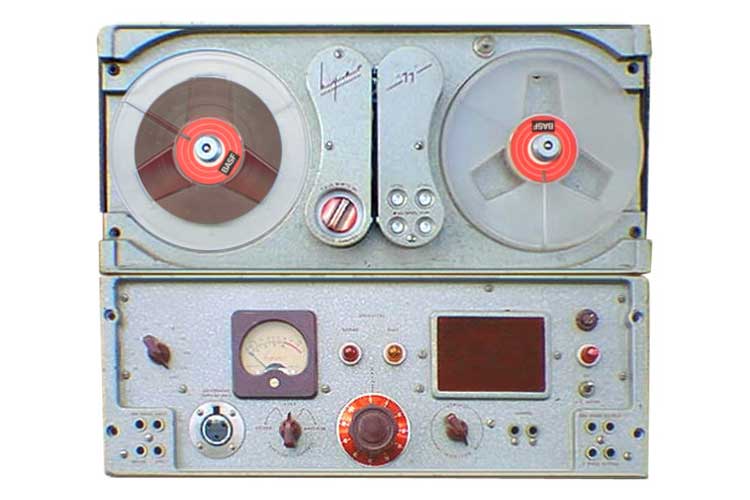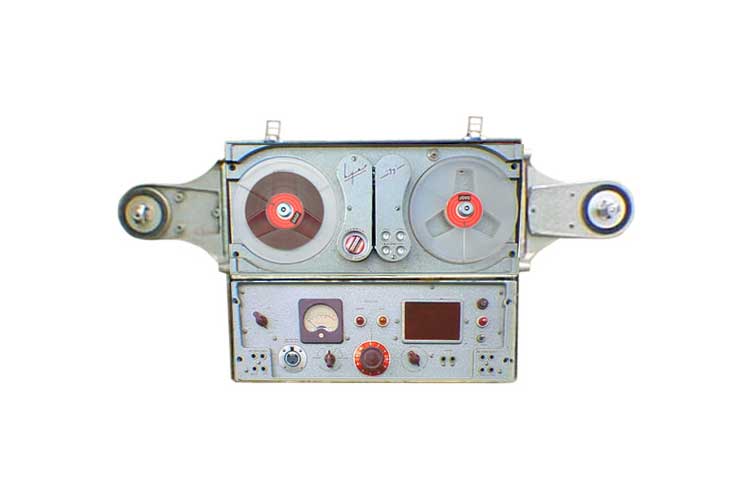Technical Details
Brand: Byer
Model:77
Category:Vintage
Application:Semi-Pro
Electronics:Tube
Country of Manufacture:Australia
Speeds: 7 1/2, 15
Max Reel Size("): 7"
Number of heads: 3
Head Composition: Permalloy
Head Configuration: Mono - Full Track
Auto Reverse?:No
Voltage(s): 220-240v
Sound quality rating:6 / 10
Long-term reliability rating: 6/ 10
Additional Details
Description
Although Byer were licensed to manufacture Magnecorder tape recorders in the early 1950s they were unhappy with the mechanical stability of the Magnecorder’s tape transport. So, they developed their own – the type 77. After six months of field testing, the Byer “77” was released in September 1954 and was the first Australian designed machine intended solely for professional and broadcasting use.
With an emphasis on reliability, the deck was solidly constructed from cast aluminium. All transport function was via direct drive and the pinch roller was the only component to use use perishable rubber.
Features included two speeds (7½ or 15ips), three-motor (direct drive capstan and two spool motors), three heads, an “S” shaped tape threading path, spool locking caps, 19″ rack mountable amplifier and deck , remote control socket for “STOP”, “START”, and “REWIND” functions, optional adaptor arms to allow the use of 10½” spools, 600 ohm balanced input and output and a Mu-metal head cover for the replay head.
Record or play mode was selected on the amplifier panel and the transport was very basic with just a single rotary control for tape speed and four push buttons for stop , start, rewind and fast forward. A neon lamp on the upper right of the deck indicated when the pinch roller was engaged and access to the head block and pinch roller could be affected by removing the two covers in the centre of the deck.
Three types of balanced input were supplied, 50 ohm microphone, 600 ohm line level and a 100 kohm bridging input. A switch to the left of the VU meter permitted the selection of any input to the meter.
Adaptor arms could be attached to either side of the deck to allow the use of 10½” spools.
An interesting footnote is that around 250 Byer “77” tape recorders were used during the 1956 Melbourne Olympic Games. Seventy ‘Studioettes’ (see additional images ) were set up for broadcast production and the recording of commentary. In addition to the Byers, fifty clockwork Commonwealth Electronics CEB machines were employed.

The Byer 77 Mk II was released in late 1956 but there is some evidence that production of the Byer 77 may have continued into the early 1960s.
Additional Info
|
Model
|
Type “77” |
|
Year
|
1954 |
|
Price when new (in Australia)
|
£245/6 |
|
Track system
|
full-track mono |
|
Heads
|
three – erase, record and playback |
|
Motors
|
three – direct capstan drive and two spool motors |
|
Maximum reel size
|
7″ (10½” with optional auxiliary spooling unit) |
|
Tape speeds
|
7½ & 15ips |
|
Inputs (all balanced)
|
50 ohm microphone, 600 ohm line and 100 kohm bridging input |
|
Valve complement
|
1 x 5Y3GT, 1 x 12AT7, 2 x 12AU7, 1 x 12AX7, and 3 x EF86 |
|
Bias frequency
|
55 Kc/s |
|
Speaker(s)
|
internal Rola speaker |



